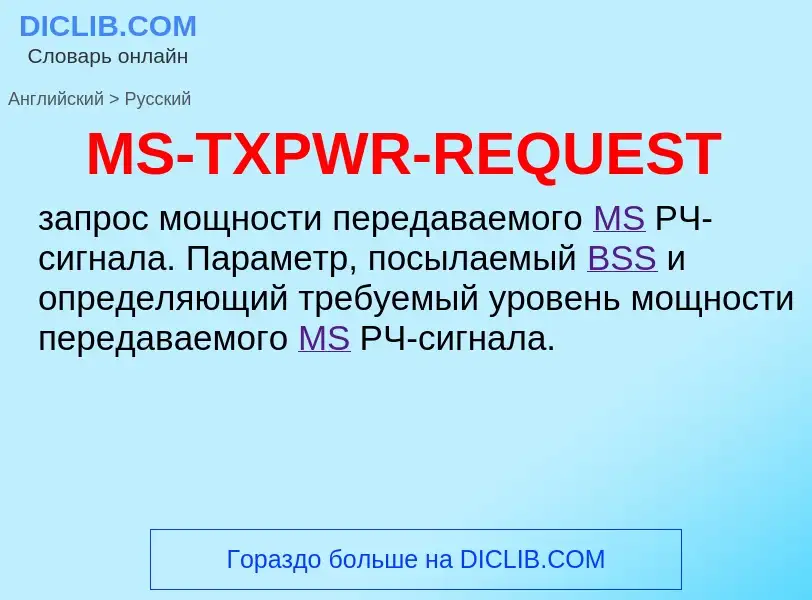Vertaling en analyse van woorden door kunstmatige intelligentie
Op deze pagina kunt u een gedetailleerde analyse krijgen van een woord of zin, geproduceerd met behulp van de beste kunstmatige intelligentietechnologie tot nu toe:
- hoe het woord wordt gebruikt
- gebruiksfrequentie
- het wordt vaker gebruikt in mondelinge of schriftelijke toespraken
- opties voor woordvertaling
- Gebruiksvoorbeelden (meerdere zinnen met vertaling)
- etymologie
MS-TXPWR-REQUEST - vertaling naar Engels
[mizməz]
существительное
общая лексика
миз
госпожа (ставится перед фамилией женщины, независимо от её семейного положения)
Definitie
Wikipedia
In computer science, request–response or request–reply is one of the basic methods computers use to communicate with each other in a network, in which the first computer sends a request for some data and the second responds to the request. More specifically, it is a message exchange pattern in which a requestor sends a request message to a replier system, which receives and processes the request, ultimately returning a message in response. It is analogous to a telephone call, in which the caller must wait for the recipient to pick up before anything can be discussed. This is a simple but powerful messaging pattern which allows two applications to have a two-way conversation with one another over a channel; it is especially common in client–server architectures.
For simplicity, this pattern is typically implemented in a purely synchronous fashion, as in web service calls over HTTP, which holds a connection open and waits until the response is delivered or the timeout period expires. However, request–response may also be implemented asynchronously, with a response being returned at some unknown later time. When a synchronous system communicates with an asynchronous system, it is referred to as "sync over async" or "sync/async". This is common in enterprise application integration (EAI) implementations where slow aggregations, time-intensive functions, or human workflow must be performed before a response can be constructed and delivered.
In contrast, one-way computer communication, which is like the push-to-talk or "barge in" feature found on some phones and two-way radios, sends a message without waiting for a response. Sending an email is an example of one-way communication, and another example are fieldbus sensors, such as most CAN bus sensors, which periodically and autonomously send out their data, whether or not any other devices on the bus are listening for it. (Most of these systems use a "listen before talk" or other contention-based protocol so multiple sensors can transmit periodic updates without any pre-coordination.)

